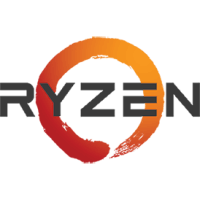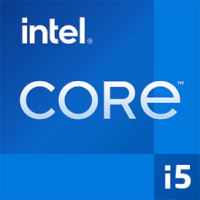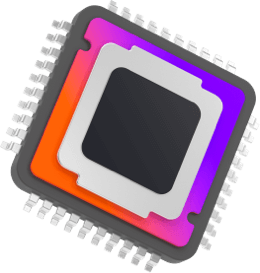| AMD Ryzen 5 2600 | Intel Core i5-4670 | |
| 65 W | Max TDP | 84 W |
| NA | Consumo di energia al giorno (kWh) | NA |
| NA | Costo di esercizio al giorno | NA |
| NA | Consumo di energia all'anno (kWh) | NA |
| NA | Costo di esercizio all'anno | NA |
AMD Ryzen 5 2600 vs Intel Core i5-4670

AMD Ryzen 5 2600 funziona con 6 core e 12 thread della CPU. Funziona su 3.90 GHz base 3.70 GHz tutti i core mentre il TDP è impostato su 65 W .Il processore è collegato al socket della CPU AM4 (LGA 1331) Questa versione include 16.00 MB di cache L3 su un chip, supporta i 2 per supportare la DDR4-2933 e presenta 3.0 PCIe Gen 20 . Tjunction mantiene al di sotto dei 95 °C gradi C. In particolare, Pinnacle Ridge (Zen+) Architecture è migliorata con la 12 nm e supporta AMD-V, SVM . Il prodotto è stato lanciato il Q2/2018

Intel Core i5-4670 funziona con 4 core e 12 thread della CPU. Funziona su 3.80 GHz base 3.60 GHz tutti i core mentre il TDP è impostato su 84 W .Il processore è collegato al socket della CPU LGA 1150 Questa versione include 6.00 MB di cache L3 su un chip, supporta i 2 per supportare la DDR3-1600 e presenta 3.0 PCIe Gen 16 . Tjunction mantiene al di sotto dei -- gradi C. In particolare, Haswell S Architecture è migliorata con la 22 nm e supporta VT-x, VT-x EPT, VT-d . Il prodotto è stato lanciato il Q2/2013
Confronta dettaglio
| 3.40 GHz | Frequenza | 3.40 GHz |
| 6 | Core | 4 |
| 3.90 GHz | Turbo (1 nucleo) | 3.80 GHz |
| 3.70 GHz | Turbo (tutti i core) | 3.60 GHz |
| Hyperthreading | No | |
| Overclock | No |
|
| normal | Architettura principale | normal |
| no iGPU | GPU | Intel HD Graphics 4600 |
| No turbo | GPU (Turbo) | 1.20 GHz |
| 12 nm | Tecnologia | 22 nm |
| No turbo | GPU (Turbo) | 1.20 GHz |
| Versione DirectX | 11.1 | |
| Max. viene visualizzato | 3 | |
| DDR4-2933 | Memoria | DDR3-1600 |
| 2 | Canali di memoria | 2 |
| Memoria massima | ||
| ECC | No |
|
| -- | L2 Cache | -- |
| 16.00 MB | L3 Cache | 6.00 MB |
| 3.0 | Versione PCIe | 3.0 |
| 20 | PCIe lanes | 16 |
| 12 nm | Tecnologia | 22 nm |
| AM4 (LGA 1331) | Presa | LGA 1150 |
| 65 W | TDP | 84 W |
| AMD-V, SVM | Virtualizzazione | VT-x, VT-x EPT, VT-d |
| Q2/2018 | Data di rilascio | Q2/2013 |
Cinebench R23 (Single-Core)
Cinebench R23 è il successore di Cinebench R20 ed è basato anche su Cinema 4 Suite. Cinema 4 è un software utilizzato in tutto il mondo per creare moduli 3D. Il test single-core utilizza solo un core della CPU, la quantità di core o l'abilità di hyperthreading non conta.
Cinebench R23 (Multi-Core)
Cinebench R23 è il successore di Cinebench R20 ed è basato anche su Cinema 4 Suite. Cinema 4 è un software utilizzato in tutto il mondo per creare moduli 3D. Il test multi-core coinvolge tutti i core della CPU e offre un grande vantaggio dell'hyperthreading.
Cinebench R20 (Single-Core)
Cinebench R20 è il successore di Cinebench R15 ed è basato anche su Cinema 4 Suite. Cinema 4 è un software utilizzato in tutto il mondo per creare moduli 3D. Il test single-core utilizza solo un core della CPU, la quantità di core o l'abilità di hyperthreading non conta.
Cinebench R20 (Multi-Core)
Cinebench R20 è il successore di Cinebench R15 ed è basato anche su Cinema 4 Suite. Cinema 4 è un software utilizzato in tutto il mondo per creare moduli 3D. Il test multi-core coinvolge tutti i core della CPU e offre un grande vantaggio dell'hyperthreading.
Cinebench R15 (Single-Core)
Cinebench R15 è il successore di Cinebench 11.5 ed è basato anche su Cinema 4 Suite. Cinema 4 è un software utilizzato in tutto il mondo per creare moduli 3D. Il test single-core utilizza solo un core della CPU, la quantità di core o l'abilità di hyperthreading non conta.
Cinebench R15 (Multi-Core)
Cinebench R15 è il successore di Cinebench 11.5 ed è basato anche su Cinema 4 Suite. Cinema 4 è un software utilizzato in tutto il mondo per creare moduli 3D. Il test multi-core coinvolge tutti i core della CPU e offre un grande vantaggio dell'hyperthreading.
Geekbench 5, 64bit (Single-Core)
Geekbench 5 è un benchmark multipiattaforma che utilizza pesantemente la memoria di sistema. Una memoria veloce spingerà molto il risultato. Il test single-core utilizza solo un core della CPU, la quantità di core o l'abilità di hyperthreading non conta.
Geekbench 5, 64bit (Multi-Core)
Geekbench 5 è un benchmark multipiattaforma che utilizza pesantemente la memoria di sistema. Una memoria veloce spingerà molto il risultato. Il test multi-core coinvolge tutti i core della CPU e offre un grande vantaggio dell'hyperthreading.
iGPU - FP32 Performance (Single-precision GFLOPS)
Le prestazioni di calcolo teoriche dell'unità grafica interna del processore con semplice precisione (32 bit) in GFLOPS. GFLOPS indica il numero di miliardi di operazioni in virgola mobile che l'iGPU può eseguire al secondo.
Blender 2.81 (bmw27)
Blender è un software di grafica 3D gratuito per il rendering (creazione) di corpi 3D, che possono anche essere strutturati e animati nel software. Il benchmark Blender crea scene predefinite e misura il tempo richiesto per l'intera scena. Minore è il tempo richiesto, meglio è. Abbiamo selezionato bmw27 come scena di riferimento.
Geekbench 3, 64bit (Single-Core)
Geekbench 3 è un benchmark multipiattaforma che utilizza pesantemente la memoria di sistema. Una memoria veloce spingerà molto il risultato. Il test single-core utilizza solo un core della CPU, la quantità di core o l'abilità di hyperthreading non conta.
Geekbench 3, 64bit (Multi-Core)
Geekbench 3 è un benchmark multipiattaforma che utilizza pesantemente la memoria di sistema. Una memoria veloce spingerà molto il risultato. Il test multi-core coinvolge tutti i core della CPU e offre un grande vantaggio dell'hyperthreading.
Cinebench R11.5, 64bit (Single-Core)
Cinebench 11.5 è basato su Cinema 4D Suite, un software popolare per generare moduli e altre cose in 3D. Il test single-core utilizza solo un core della CPU, la quantità di core o l'abilità di hyperthreading non conta.
Cinebench R11.5, 64bit (Multi-Core)
Cinebench 11.5 è basato su Cinema 4D Suite, un software popolare per generare moduli e altre cose in 3D. Il test multi-core coinvolge tutti i core della CPU e offre un grande vantaggio dell'hyperthreading.
Cinebench R11.5, 64bit (iGPU, OpenGL)
Cinebench 11.5 è basato su Cinema 4D Suite, un software popolare per generare moduli e altre cose in 3D. Il test iGPU utilizza l'unità grafica interna della CPU per eseguire i comandi OpenGL.
Estimated results for PassMark CPU Mark
Alcune delle CPU elencate di seguito sono state confrontate con CPU-Comparison. Tuttavia, la maggior parte delle CPU non è stata testata ei risultati sono stati stimati dalla formula proprietaria segreta di un confronto tra CPU. In quanto tali, non riflettono accuratamente i valori effettivi del contrassegno CPU Passmark e non sono approvati da PassMark Software Pty Ltd.
Monero Hashrate kH/s
La criptovaluta Monero utilizza l'algoritmo RandomX da novembre 2019. Questo algoritmo PoW (prova di lavoro) può essere calcolato in modo efficiente solo utilizzando un processore (CPU) o una scheda grafica (GPU). L'algoritmo CryptoNight è stato utilizzato per Monero fino a novembre 2019, ma potrebbe essere calcolato utilizzando gli ASIC. RandomX beneficia di un elevato numero di core CPU, cache e una connessione veloce della memoria tramite il maggior numero possibile di canali di memoria

Stima dell'utilizzo elettrico


